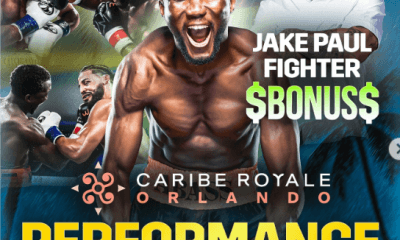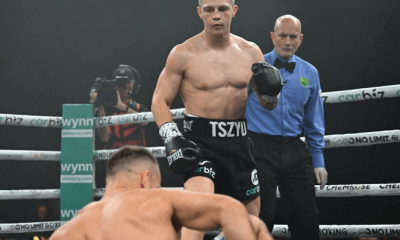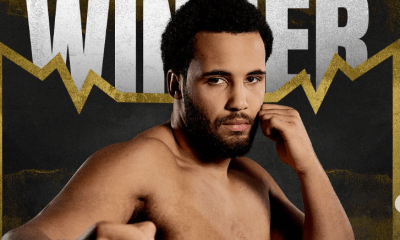Asia & Oceania
The Fifty Greatest Welterweights of all Time Part Three: 30-21

Greatest Welterweights of all Time Part Three – These fighters are special.
Among them are some of the greatest fighters in history; pound-for-pound monsters capable of competing with anyone on this list. The reason they wash up in the twenties rather than the teens, or even the ten, is explained by their relative standing in the historical maze that is the welterweight division. Higher, in some cases, in pound-for-pound standing than in welterweight history, seeing them ranked among mortals can be jarring. Always, then, the criteria must be kept in hand.
It is what these men did at welterweight that matters and nothing else. Balancing such an equation can be extremely difficult, but here is my stab.
I hope you like it.
#30 – Fritzie Zivic (158-64-9)
The wonderful Fritzie Zivc was the most fearless fighter of boxing’s golden era, the 1940s, a time that ranks among the deepest in lightweight, welterweight and middleweight history. Zivic graced all of these divisions; never more than a small welterweight he crazily and happily matched relative giants like Jake LaMotta, who enjoyed a size, style and age advantage over the much smaller Zivic but who was perhaps a little lucky to emerge from their trilogy with only a single defeat. On the other hand, the golden generation of lightweights that moved up from below caused him dreadful problems at welterweight and that hurts him here. Zivic’s career is one of fearlessness and he suffered the consequences of a matchmaking policy that was no policy at all outside of “sign the contract”, hence that disturbingly large number of losses.
But just like he gave Billy Conn a lesson in professional boxing when he met the future light-heavyweight champion of the world while giving away seven pounds, so too he gave one to Sugar Ray Robinson at the 147lb limit. “I learned more in my two fights with Zivic than all my other fights put together” offered a young Robison after his second fight with Fritzie, where, finally, he mastered him after their narrow first. Robinson was a legend who passed through two fights with Zivic unscarred; the great Henry Armstrong was not that lucky.
He met Armstrong for the first time in October of 1940, Armstrong’s world welterweight championship at stake. Much has been written about this fight. That Armstrong was past it. That Zivic took the title by relying in the main upon dirty tactics. Then, that Zivic managed only one successful defense of the title before being beaten by Red Cochrane, one of the weaker lineal welterweight champions. All of this may be true, but there are other things to be said, too. Perhaps Armstrong was past his best, but he had victories over the all-time great Sammy Angott, among others, in his future. And it’s true that his first war with Armstrong was among the roughest title fights seen post World War One, but it also needs to be said that Armstrong had his own bag of tricks and it was a foul by he, and not Zivic, that brought forth from referee Arthur Donovan the infamous line, “if you guys wanna fight like that it’s OK with me.” Finally, it should be noted that for all that Armstrong had some heavy miles on him when he entered the ring for that blood-curdling war, so did Zivic. He is one of the few that did miles as hard as Armstrong, and on the same road.
The second time they met, Zivic stopped him in twelve. He was the first man to do so in ten years, the second man to do so in history and the only man to stop him in a meaningful fight. Armstrong, one of the great welters, ranks well ahead of Zivic, and rightfully so, but any man who beats Armstrong twice at 147lbs must register. A huge swathe of losses against less impressive opponents means I am struggling to place him any higher, but it is unlikely that any weight division’s top thirty has so storied a gatekeeper as Zivic.
#29 – Shane Mosley (49-9-1)
Shane Mosley stepped up to welterweight in 1999 and had his best win in the division in 2000, against Oscar De La Hoya. Nine years later, having travelled to 154lbs for mixed results in the wake of his two career-wrecking defeats at the hands of Vernon Forrest (see Part One), he had his next best, a stunning defeat of heavy favorite and lineal welterweight champion Antonio Margarito.
It is longevity of a sort, spotty but impressive, and it speaks to the determination of a fighter who, in the ring, remains something of a front-runner to my mind. This, among other short-comings, saw him lose wide to Floyd Mayweather and Manny Pacquiao at the weight, and narrowly against Miguel Cotto; this list accounts, frankly, for most of his biggest nights in a welterweight ring.
Still, his defeat of De La Hoya was deeply impressive. Mosley basically out-squabbled Oscar, deploying his offense to limit his opponent just as his opponent deployed his to do the same. This led to a reluctance on the part of Oscar to hook, and a reluctance on the part of Mosley to jab, knowing, as he did, that he would likely be out-jabbed. But Mosley out-lasted and out-landed his man in frenetic exchanges that resulted from this offensive stalemate and a stronger finish made him the legitimate welterweight champion of the world.
Twin losses to the steady Forrest hurts his standing badly, but he redeemed himself when, in 2009, nearly a decade after he raised it the first time, Mosley raised the welterweight championship of the world again. He thrashed Margarito, who was then regarded as unstoppable, breaking him utterly. It was the summit for Mosley’s “power-boxing,” an overstatement on almost every other night of his career but a perfect fit for the way he out-sped and out-punched Margarito, suddenly revealed as turgid and static by Mosley’s persistent reclamation of distance.
Across the decade he bagged other ranked men, including Wilfredo Rivera, Shannon Taylor, David Estrada and Luis Collazo.
#28 – Marlon Starling (45-6-1)
Marlon Starling did everything well. He feinted beautifully with head and hands; he went after the body like a man who hadn’t eaten in weeks; he had a wonderful right hand, one of the best in welterweight history, an all-round wonder of a punch that he could throw short, long, big, small, with which he could sharp-shoot or weave into a seething combination; but he also had a very good left jab and a cutting, often crucial left-hook. An excellent counter-puncher capable of barelling a legitimately thuggish lead over the top, phenomenally strong, difficult to intimidate and he had excellent functional footwork which allowed him to keep savage pressure on the numerous opponents who elected to run from him.
His path to the welterweight title was one walked by the old school; matched tough early he lost twice to a peaking Donald Curry and deployed some of the best counter-pressure of his era to dominate the teak-tough Simon Brown in a fight that was somehow rendered a split-decision despite Starling seeming to bag very nearly every single one of the often close rounds. He picked up a strap with a sensational knockout of Mark Breland while trailing on the cards, his typical varied stoppage of the belt-holder – body-attack followed by right-handed siege followed by a devastating left-hook – carrying with it an air of inevitability. After drawing a rematch with Breland in a fight I feel he clearly deserved the nod in, he reached his prime with a domination of lineal champion Lloyd Honeyghan. Boxing with wonderful variety, he out-punched the champion in close even while being out-worked, out-fought him and broke him when the inevitable clash of wills took place ring center, and counter-punched him out of an aggressive fight-plan, all in nine short rounds. Middleweight beckoned and a sensational performance against Michael Nunn brought him within a hair’s breadth of true sporting immortality; as it is #28 at welterweight is his high-water mark, two rather unfortunate losses to Johnny Bumphus and Pedro Vilella keeping him out of the top twenty-five.
#27 – Charley Burley (83-12-2)
Charley Burley “feels” low at #27, but while he is unquestionably one of the greatest middleweights of all time, it is worth remembering that Burley, perhaps my favorite fighter in all of boxing history, spent only three years in earnest as a welterweight. During this time he did some interesting things, some special things, but he also boxed his professional apprenticeship at the weight, having enjoyed an amateur career that marked him out as promising but perhaps not as the incredible talent he would become. In 2016, Burley remains the definitive poster boy for the great and denied, boxing’s most celebrated uncrowned king.
Returning to that apprenticeship, it ended abruptly and rudely when he was beaten by Fritzie Zivic in March of 1938 in a fight that many regarded as a robbery. This dropped Burley to 16-2 and the work he did in the division before he moved permanently to middle – the work he did to justify his place on this list – amounts to little more than eleven wins. But once Zivic had taught him his final lesson, as the fearless little man did so often against the great and good, Burley did not look back.
The first order of business was revenge, taken over ten rounds during which Burley was careful to leave his left where it belonged, right in Fritzie’s kisser. On paper, his best win followed shortly thereafter against the wonderful Cocoa Kid who he happily bounced about the ring and ripped from him the questionable blessing that was the “colored” world championship. Here, too, there are provisos however; the Kid was coming off a painful stoppage that resulted in a badly swollen eye and had won only three of his last six. Burley was dominant but also a part of a pattern. Another victory over Zivic and a shared pair with the excellent Jimmy Leto buoy him a little but it is perhaps his first win over the incredible Holman Williams that is most crucial – then again, Williams did not make this list, because like Burley the overwhelming majority of his best wins came at middle.
If you are in a position to scan ahead at the names that rate higher, take note of this, however: Burley, at his best, might just have beaten every single one of them.
But at his best, he was a light-middleweight.
#26 – Donald Curry (34-6)
Donald Curry is the very embodiment of a near-great fighter who is said to have left his potential unfulfilled. He amassed a 25-0 record in search of dominance in a welterweight division left awash with chaos due to the abdication of Ray Leonard; three outstanding talents vied for the crown he left in shards, namely Marlon Starling, Milton McCrory and Curry. Curry annexed Starling first and was only 14-0 at the time he beat out the more established Starling over twelve, a feat he repeated with a strap on the line over fifteen just over a year later.
Curry showed, in these fights and others, a certain unbound mobility which seems now something of a foreshadowing of Roy Jones. He wasn’t nearly as flashy, but was more technically adept, moving lightly and unexpectedly on his feet in small ways where Roy’s moves were big. Against Starling, Curry did not look other-wordly in the same way Jones did, but he was a fighter who often just looked slightly better than even an excellent opponent; slightly quicker, slightly more sure, slightly more powerful with both hands, and although it is not difficult to find people who consider these fights close, for me they were near-dominations. On both occasions Curry just ground Starling to a halt, bringing him up short with punch selection, surety and an unavailability for punches.
Curry’s stated goal was to “be history” to be “mentioned in the same breath as Sugar Ray Robinson” and he took a huge step toward that goal on December 6, 1985 when he laid Milton McCrory out flat in two with a steaming left hook that ended the resistance of the remaining outstanding welterweight of the era. Curry was a scintillating puncher with all the skills and smarts in the world and was now the lineal champion.
He was pulled up short after just a single defense against Eduardo Rodriguez by Englishman Lloyd Honeyghan. Honeyghan was perhaps one of the few welterweights in the division who was unintimidated by Curry and it showed; Curry looked an ashen version of the fighter who had sabotaged Starling so completely.
He always struggled with the weight – he took off three pounds the day before the first fight with Starling, years earlier – and it was likely that his reign at the very top of the division was always going to be a short one.
Greatest Welterweights of all Time Part Three
#25 – Pernell Whitaker (40-4-1)
Pernell Whitaker, always fascinating, is among the most difficult of modern welterweight to judge. Little about his career is clear; even his status or not as lineal welterweight champion of the world is questionable with some sources listing him as such and others seeing the throne as empty. This matters because Whitaker, upon moving to 147lbs, did not cover himself with glory in terms of opposition. His resume is far from awash with top-ranked fighters and although they were special, even watershed occasions for technical excellence in the welterweight division, his defeats of Buddy McGirt represent his sole victories against a fighter at the very top of the division – although plenty are prepared to hand him a victory over Oscar De La Hoya, such was the controversy that surrounded their 1997 contest.
Whitaker, the superstar who was not a superstar, boxed three superfights at welterweight; the razor-thin loss to De La Hoya; a wide decision beating while well past his prime against Felix Trinidad; and a ludicrously rendered draw against Julio Cesar Chavez. But as is so often the case, it is not the superfights that tell the tale but his duels with the rank and file. His second fight with McGirt arguably remains the definitive clinic against a world class opponent; his first fight with the ranked Wilfredo Rivera exposed his limitations at the weight, namely in height, reach and a diminishing desire to train.
Perhaps nobody in the sport comes off-center after tricking an opponent in and countering the shots levelled at his vapor, however, and those limitations were not enough to keep him from the top twenty-five.
#24 – Oscar De La Hoya (39-6)
As discussed above, Wilfredo Rivera pushed Pernell Whitaker hard in their first fight. Rivera revealed aspects of Whitaker’s limitations at the weight. Limitations were not evident in Oscar De La Hoya’s meeting with the same fighter when they clashed the following year. By this time, De La Hoya had already beaten Whitaker by unanimous decision although the difference between the two was a single round on my card. Between them, the judges, ringside sports-reporters and HBO commentary crew were split exactly down the middle. It was that type of fight, a genuinely befuddled De La Hoya upping his workrate and landing the harder shots even as Whitaker generalled him. Any result would have been reasonable but had Oscar used his considerable size-advantage in contradiction to his corner’s demands that he remain on the outside after receiving a cut, I think he could have made it certain.
That arguable victory aside, there is a lot here to admire. De La Hoya probably belonged at welterweight and it is a shame that his early weight-cutting and later ambition limited his career at 147lbs to just thirteen fights. Of these, he lost three, to Shane Mosley as discussed earlier, to Felix Trinidad in their 1999 superfight, and to Manny Pacquiao in their depressing yet astonishing 2008 contest where De La Hoya turned punching bag. Personally, however, I think De La Hoya defeated Felix Trinidad clearly and by distance, showing a wonderful variety in leads and consistently brilliant when on the attack – until he wasn’t, surrendering the closing three rounds on all cards. This is probably De La Hoya in summary, brilliant but flawed; he can be seen standing around waiting to get hit, boxing with a stiff-shinned galloping style, coming square across his lead foot, gassing and inexplicably abandoning his jab in multiple fights where the continued use of it would have made his night easier.
But he hit hard, had a granite chin, was quick, and tactically flexible (sometimes to his detriment!); Pernell Whitaker, Wilfredo Rivera, Ike Quartey, Oba Carr, Patrick Charpentier and Derrell Coley are some of the ranked men who can attest to that.
#23 – Young Corbett III (121-12-22)
Fabulous southpaw Young Corbett III spent years boxing at 147lbs and lost to just two men at that weight; Sammy Baker and the deadly Jimmy McLarnin who stopped Corbett in a single round in 1933 and sent him running for the middleweight division. These losses twice interrupted unbeaten streaks of around thirty fights. That is a lot of welterweight scalp.
The only significant footage of Corbett online is brought to you by the McGrainBoxing channel and reveals a southpaw left of unparalleled consistency. Jackie Fields, then the 147lb king and the fighter I am happy to call the most underrated welterweight in history, is the world class opponent and Corbett dominates him with that left hand. Moving away in small increments, drawing Fields onto that left with unerring accuracy, it is the punch that decides the fight, the infighting often even, the mid-range exchanges frantic and desperate. Their first fight, a non-title affair, is rumored to have been even more one-sided, with Fields struggling to complete the ten round distance. Two clean wins over Jack Thompson (#41) and a third, more questionable victory against a second welterweight champion, in conjunction with a sparsity of losses that is astounding given his schedule, gives Corbett the air of the unbeatable; as does his superb generalship and punching as it appears on film. This is tempered by the shortness of his reign as world champion and his destruction at the hands of McLarnin.
#22 – Manny Pacquiao (57-6-2)
Manny Pacquiao is a pound-for-pound phenomenon whose cheerful ambition acts as a limiting factor in appraising him in a weight-specific sense. He boxed at 130lbs so briefly that were he not the most mesmerizing superstar of his generation it may have been missed; he was at 140lbs just long enough to destroy the division’s boss, Ricky Hatton; at 147lbs he has done more, but has boxed only eleven contests, not enough to see him riding roughshod over this kind of company. More, it was the first division where the opposition had become big enough to absorb the former-flyweight’s punches while still finding the will to dish out a few of their own. This led to a desperately close third fight with perennial foe Juan Manuel Marquez, who stalked him up to 147lbs to drop a decision I feel he was entitled to, before a fourth contest in which Pacquiao was hideously and devastatingly knocked out in a highlight-reel stoppage which would have been more at home on Pacquiao’s ledger than Marquez’s. He also “lost” to Timothy Bradley in a robbery so blatant that it is treated here as a Pacquiao win and a Bradley loss. Note that this article is being written in the muster for Pacquiao-Bradley three, the Filipino having avenged himself in a second fight. Should Bradley win the third legitimately, that would be enough to wrestle the #50 spot from Simon Brown and similarly Pacquiao would slide a little. Having dominated Bradley twice, however, Pacquiao will be confident.
The other fight he lost at 147lbs was the heralded but ultimately disappointing showdown with Floyd Mayweather, the fight that settled pound-for-pound bragging rights for a generation. Pacquiao was out-classed.
It’s a mixed bag then for Manny, but it is also the case that some of the most devastating performances of a devastating career have been turned in at 147lbs, none more so than his blood-sodden twelfth round stoppage of Miguel Cotto. Nobody, not Antonio Margarito (who defeated him in shadowy circumstances) and certainly not Floyd Mayweather, out-classed Cotto like Pacquiao did. His defense was entirely mobile, by which I mean he was rarely caught out of position and unable to punch. Indeed, only Marquez and Mayweather, perhaps the two best technicians of their generation in any division, were able to pull him out of formation. Pacquiao could appear, literally, right behind an opponent’s retreat throwing very fast very hard punches two-handed. A tornado, he dropped hardly a round to Cotto before breaking him.
Joshua Clottey hardly won a minute of a round against him, Bradley, who earnestly boxed his way onto the pound-for-pound lists, was out-worked twice whatever the judges say and Shane Mosley basically decided to spar with Pacquiao after being dropped early by punches so fast he was literally surprised to find himself on the canvas.
#21 – Carmen Basilio (56-16-7)
In his celebrated series with the bootheel-tough Tony DeMarco, Carmen Basilio absorbed punches that would have felled some of the welterweights on even this list. Fighting relentlessly for all that he sometimes circled rather than stormed forward, Basilio was there to be hit for all that his strangely sanguine serpentine movement presented a moving target. Going low as a preferred method of defense, he tested his opponent’s plane of attack, at least, stooping and coming up with a whipping left-hook or a sneaky right-hand to the body. What came the other way, taking that was just a part of his job and he ate stoically and without emotion upon whatever fare his opponent dished up. Then he broke him.
DeMarco was broken, ground down in one of the most terrifying welterweight millwheels, the delightful symmetry in his twice being stopped in the twelfth after scoring early, the perfect illustration of the consistency of Basilio’s attack.
He was a wonderful fighter, earnest, workmanlike, but special enough that he clambered forward steadily and without fanfare from journeyman welterweight to two-time world champion. Early, he was beaten often and by middling opposition, but sometimes a loss will turn a fighter around as surely as a win and in Basilio’s case it was his 1952 defeat to the excellent Billy Graham that made his career. If Basilio was a carpenter then Graham was an artist, the difference between the former’s pushed, questioning jab and Graham’s smooth rat-a-tat-tat the defining difference. But in the wake of that defeat, Basilio lost just two in thirty, a split decision to Kid Gavilan and the twice avenged and questionable defeat to Johnny Saxton. He was impossible to shake off; coming back from the brink against DeMarco on as many as four occasions, he came back at Saxton, too, twice avenging that decision by knockout.
Saxton, DeMarco and Graham form the holy-trinity of Basilio’s welterweight legacy. Without them, he could not appear upon the list; with them, his standing is lower for me than for many due to the ten losses he suffered in the early part of his career and the surprising dearth of contenders on his ledger. Still, names like Ike Williams and Lew Jenkins, for all that they were faded by the time he got to them, do his standing no harm and a 5-2 record in title fights, both losses close, help seal the deal.
Some bad, bad men keep him out of the top twenty.
Check out boxing news and video at The Boxing Channel
-

 Featured Articles4 weeks ago
Featured Articles4 weeks agoThe Hauser Report: Zayas-Garcia, Pacquiao, Usyk, and the NYSAC
-

 Featured Articles3 weeks ago
Featured Articles3 weeks agoOscar Duarte and Regis Prograis Prevail on an Action-Packed Fight Card in Chicago
-

 Featured Articles3 weeks ago
Featured Articles3 weeks agoThe Hauser Report: Cinematic and Literary Notes
-

 Book Review2 weeks ago
Book Review2 weeks agoMark Kriegel’s New Book About Mike Tyson is a Must-Read
-
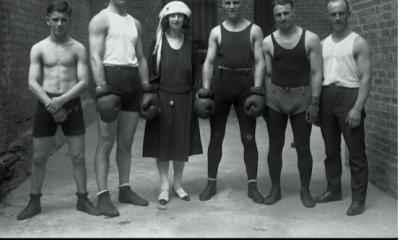
 Featured Articles4 days ago
Featured Articles4 days agoThe Hauser Report: Debunking Two Myths and Other Notes
-

 Featured Articles4 weeks ago
Featured Articles4 weeks agoRemembering Dwight Muhammad Qawi (1953-2025) and his Triumphant Return to Prison
-
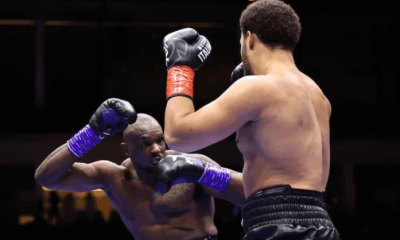
 Featured Articles1 week ago
Featured Articles1 week agoMoses Itauma Continues his Rapid Rise; Steamrolls Dillian Whyte in Riyadh
-
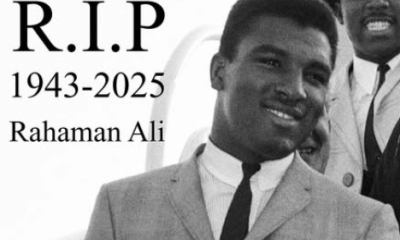
 Featured Articles3 weeks ago
Featured Articles3 weeks agoRahaman Ali (1943-2025)


